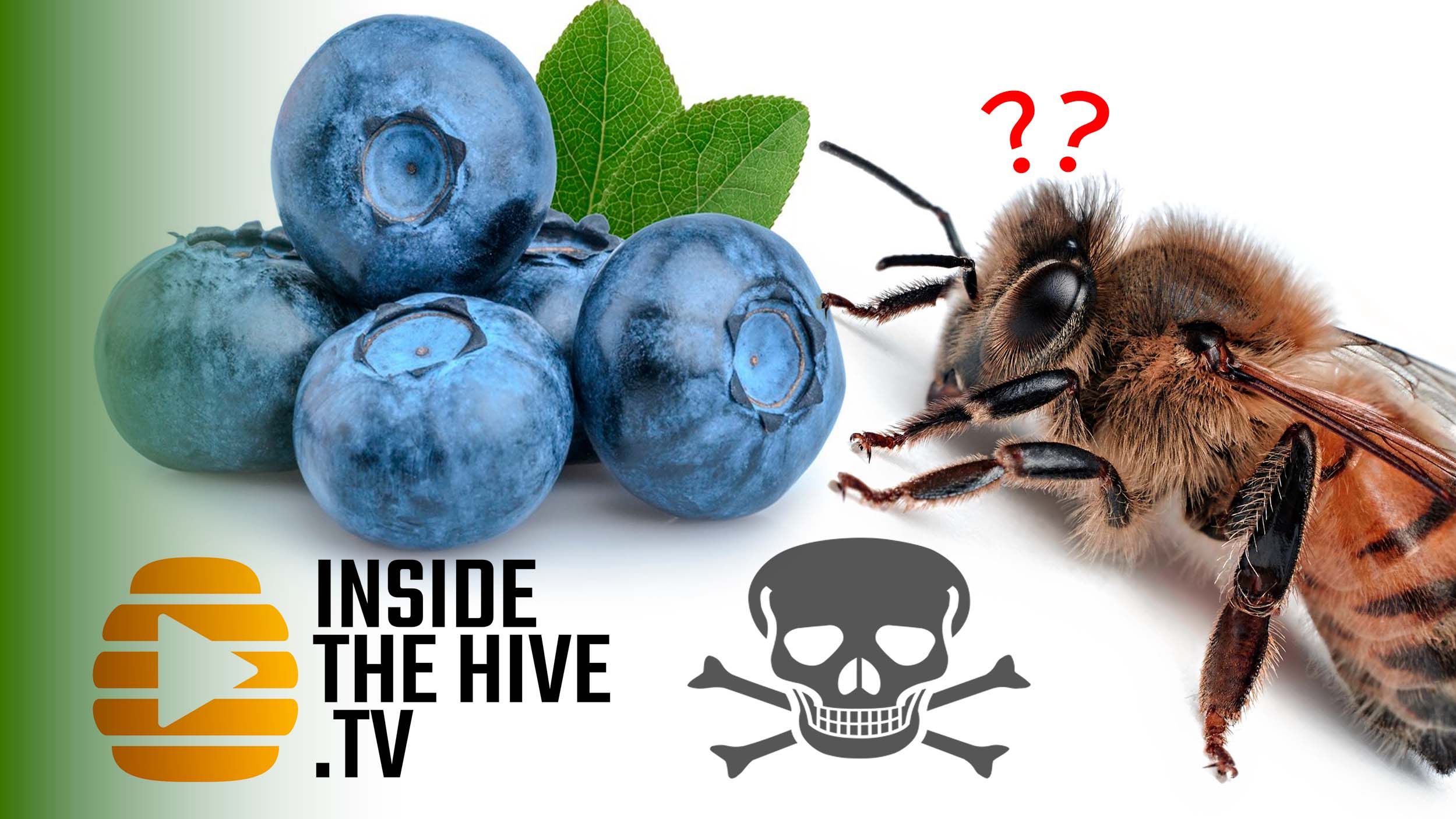The Potential Impact of Fungicides on Honey Bees
Mar 15, 2023
The use of synthetic chemicals to reduce crop losses from pests is a common practice in the agricultural industry. However, these chemicals can also be hazardous to honey bees, which are crucial in pollinating several crops, including blueberries, a billion-dollar industry. In a recent video by Dr. Humberto Boncristiani, he discusses a current issue in the blueberry industry: the potential impact of fungicides on honey bees.
The Problem
European foulbrood is a dangerous bacterial disease that affects honey bee colonies. Honey bee larvae are infected with the Gram-positive bacterium Melissococcus plutonius, which colonizes their midgut and competes with the larvae for nutrition. Clinical signs of EFB include yellow to brown, twisted, and/or deflated larvae, dead larvae that dry to form a rubbery scale on the back of the brood cell, and a sour odor from the affected brood due to secondary bacterial infection. EFB can emerge in honey bee colonies when under stress, such as when nursing bee populations are low, and pollen and nectar resources are scarce.
Fungicides are widely used in blueberry production to prevent fungal diseases such as Anthracnose and Botrytis fruit rot. However, beekeepers have reported increased infection rates of EFB in their colonies while pollinating blueberry crops. This has caused concern among beekeepers, growers, and consumers alike. Blueberry growers may use synthetic chemicals to reduce crop losses from pests, but these chemicals can be hazardous to the same honey bees required to pollinate this crop. Balancing these competing needs has been termed Integrated Pest and Pollinator Management (IPPM).
The Research Article
In January 2023, Dr. Sarah Wood and her collaborators, funded by Project Apism, tested the hypothesis using in-vitro infection models on whether or not fungicides are implicated in the increased EFB infection observed by beekeepers.
Honey bee larvae raised in controlled laboratory conditions were chronically exposed to environmental levels of commonly used blueberry fungicides and infected with EFB bacteria. The results of the study were surprising and showed that fungicides might be both harming and helping honey bee populations.
Larval exposure to medium and high concentrations of Kenja, without M. plutonius infection, significantly decreased larval survival compared to the control group by 16.7% and 83.4%, respectively. All other fungicides did not affect the survivorship of the honey bee larvae in any concentration. However, when larvae infected with EFB were exposed to the medium and high concentrations of Captan, the high concentration of Luna, and the low and high concentrations of Switch, these larvae experienced a significant increase in survivorship compared to infected control larvae. Larval exposure to combinations of two or three fungicides did not negatively affect survival relative to the control group. However, exposure to low concentrations of four fungicidal products simultaneously resulted in a significant 24.2% decrease in larval survival compared to control larvae.
The Conclusion
The study by Dr. Wood and her collaborators is an eye-opener for the blueberry industry and the use of fungicides in agriculture. The results show that fungicides might be both harming and helping honey bee populations. While some fungicides have a direct detrimental effect on normal larvae development, others help honey bees against bacterial infection. The combination of some fungicides helped honey bees even more against bacterial infection, while the combination of four fungicides had a detrimental effect on honey bee larvae.
The use of pesticides in our agricultural system is perhaps a necessary evil for now, and this practice will remain until we find another way to produce the food we need. However, the study highlights the importance of further research to advance our understanding of how these chemicals work and ensure they can be used safely. Such investigations are essential for facilitating constructive conversations to discover ways to keep our bees healthy and our agrosystems working for us rather than against us.
Overall, the potential impact of fungicides on honey bees is a serious concern that requires further attention and research. Dr. Wood's study is an important step in understanding the complex relationships between honey bees, fungicides, and crop production. It is up to us to continue this conversation and work towards a sustainable future for both our bees and our food systems.
Please check it out the livestream with Dr. Wood discussing this problem.
If you want to learn more about this issue and support the work of Dr. Boncristiani and Inside the Hive TV, we invite you to become a patron. By becoming a patron, you can access exclusive content, such as live streams with beekeeping experts, and help support our mission to educate and empower individuals about the importance of honey bees. Your support makes it possible for us to bring you more informative and engaging content.
Don't miss this opportunity to learn more about this critical issue and support the work of Inside the Hive TV. Become a patron today and join us in creating a more sustainable future for our bees and our planet.
By supporting us on Patreon, you are helping us to make more videos about bees for everyone. Check it out.
Stay connected with news and updates!
Join our mailing list to receive the latest news and updates from our team.
Don't worry, your information will not be shared.
We hate SPAM. We will never sell your information, for any reason.




